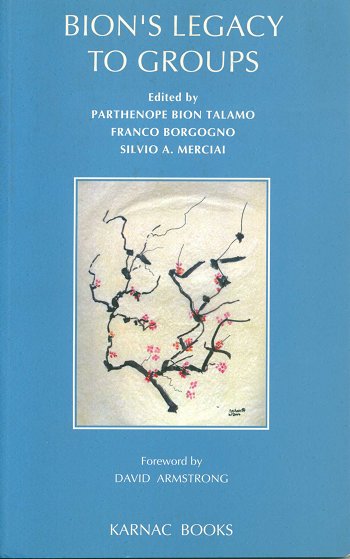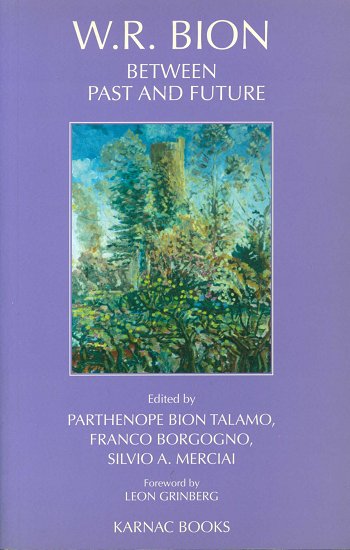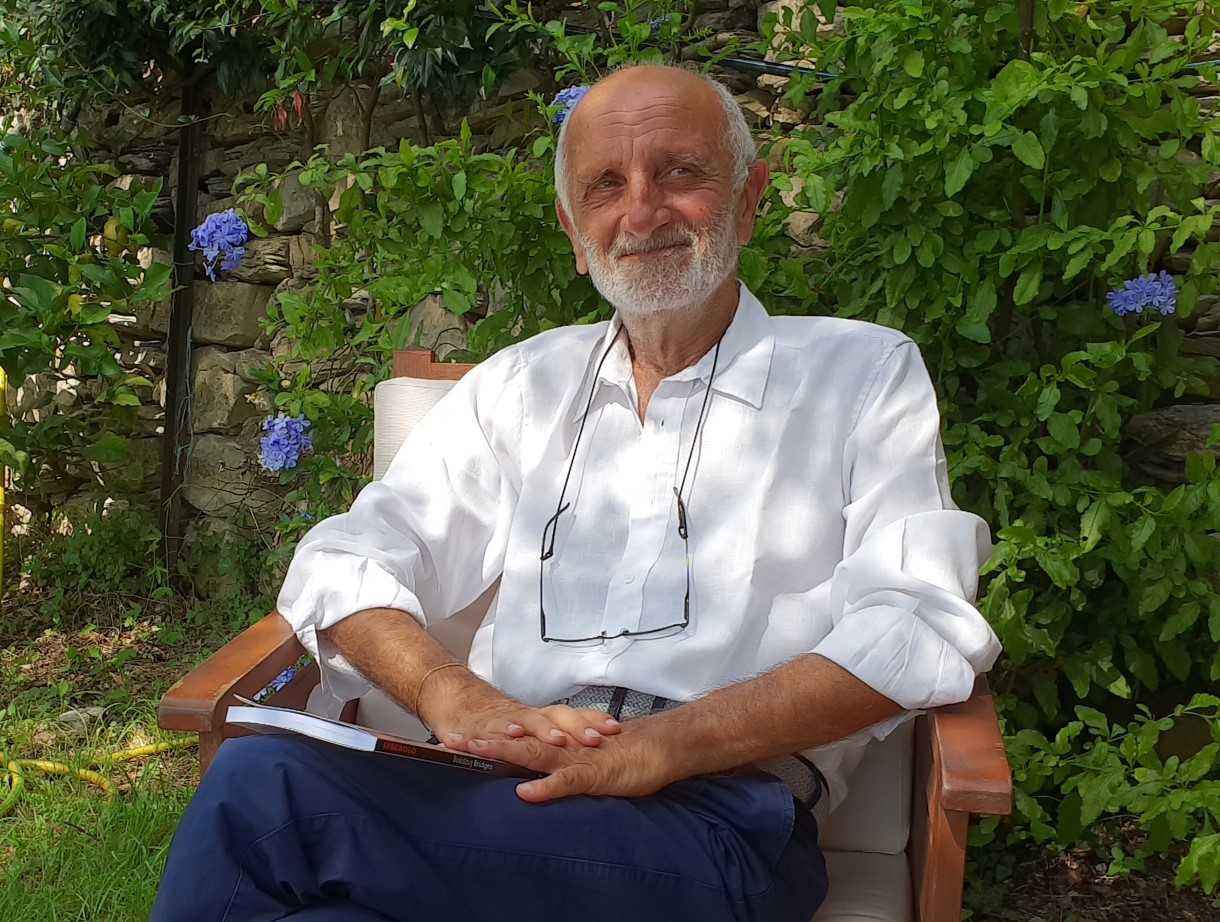
particularly neuroscience and cyberpsychology,
and I have dedicated many years of my research activity to this field,
in collaboration with Beatrice Cannella,
my research and life partner.
I discussed this topic during a recent interview with Amedeo Falci
which is published on the SPI website
and is also available here.
I will present selected excerpts from it below.
Beyond philosophy and the humanities, which have traditionally been more consonant with psychological training, I believe psychoanalysis must venture - more extensively than it has thus far - into the fascinating domains of neuroscience and computer science, allowing itself to be influenced without excessive fear of losing its identity.
The insights gained from years of engaging with neurobiological literature have been numerous and intellectually stimulating.
I consider the computational theories of predictive coding and their sophisticated elaboration by Friston, but particularly the emerging perspectives from cognitive neuroscience: affective neuroscience - the experimental study of affects, emotions, motivation, and pleasure - and social neuroscience - the mechanisms of our fundamentally relational nature, from the well-documented phenomenon of mirroring to the synchronization theories proposed by Ruth Feldman's affiliation neuroscience.
I also consider the advances in the biology of mind: epigenetics (research on intergenerational trauma transmission, such as Galit Atlas's work, and more broadly the trauma literature, building on Bessel Van der Kolk's contributions) and developments in microbiome research, which are opening significant perspectives in the pathophysiology and potential treatment of certain forms of depression; additionally, I consider the emerging frontier of research on integrating psychedelic substances into psychotherapeutic practice.
Furthermore, there exists the domain of the digital revolution, which may appear remote or abstruse but, in my assessment, is neither.
Consider, for example, the phenomenon of online psychotherapy, which did not originate with the recent pandemic (initial studies in the United States date back to the 1950s; in Italy, Paolo Migone, Roberto Goisis, and I published on this topic in the late 1990s). However, it remained for decades in the realm of the unspoken and unwritten (due to the profound fear of the anathema: "this is not psychoanalysis!") and now, I fear, may recede again once the immediate crisis has passed.
Yet scholars like Todd Essig have long attempted to introduce into the psychoanalytic discourse the themes of the digital revolution and the possibilities enabled by telecommunications development (I was an active participant in his The Psychoanalytic Connection, which flourished from 1993 to 2009). Currently, they are encouraging us toward active engagement (engaged participation, Psychoanalytic AI Activism) in the critical adoption of artificial intelligence tools and their broader cultural implications: the progressive substitution of direct encounters and vocal exchanges with texting, our advancement as sleepwalkers toward artificial intimacy in a world where simulated empathy (pretend empathy, in Sherry Turkle's apt formulation) and the erosion of trust and privacy are re-engineering interpersonal relationships and the experience of self.
Consequently, psychoanalysis must engage proactively (Essig directs the Council on Artificial Intelligence within APSaA) to reaffirm its values and principles in clinical work by developing new theoretical frameworks to comprehend and analyze the multifaceted reality of contemporary interpersonal relationships (in-person; screen-mediated with another person; with AI in the form of chatbots or robots - all of which we tend to anthropomorphize, as we have known since the days of ELIZA). We must also address the migration of psychotherapy toward app-based solutions (self-proclaimed therapists, coaches like Wysa, simple virtual companions like Replika) operated by opaque and uncontrollable algorithms (which, notably, appear to be effective - consider, for example, the recent RCT on Therabot for anxiety and depression).
This, I believe, represents the critical juncture: the integration of these developments into our educational curricula, from university classrooms to SPI training programs. We remain heavily focused on the historical dimension of knowledge, our origins (undoubtedly important), but insufficiently oriented toward the pragmatic future-directed dimension.While we all possess a superficial familiarity with mirror neurons, remote psychotherapeutic treatments, or prompting of LLMs, and occasionally write about them, I observe that in practice, we achieve limited integration or dialectical engagement with our traditional mental constructs, which should be, at least partially, subject to critical examination.
The fascinating neuroscientific discoveries in various domains apparently crucial to our theoretical framework - emotion, decision-making processes, the unconscious, interpersonal relationships and intersubjectivity, love, motivation, pleasure, behavioral choice and control, etc. - largely await integration into comprehensive theories that reformulate the insights gained from over a century of psychoanalysis in contemporary and scientifically valid terms.
My engagement (or more accurately, re-engagement) with neuroscience occurred somewhat serendipitously: while searching for texts to prepare for teaching psychosomatics at the Faculty of Psychology in Turin (a subject assigned to me rather than specifically chosen), I encountered Antonio Damasio's recently published work The Feeling of What Happens (2000). It was, I recall, a pivotal moment, as it allowed me to both accommodate Bion's insights (the foundational theorist of my psychoanalytic training) regarding the inadequacy of our mental apparatus for its tasks, and reconnect with my earlier involvement in neurobiology during medical school (having spent years in neurochemistry laboratory research before completing my dissertation on cholinergic mediators of anxiolytic drugs).
Motivated by Kandel's aforementioned perspectives, I began intensive study - in collaboration with Beatrice Cannella - and after several years (2005), our research first materialized in the publication on Psychomedia of Pionieri o Emigranti? Viaggio con la psicoanalisi nelle terre di confine (titled after Diego Napolitani's apt formulation), which we subsequently updated in 2007
followed by the volume published by Raffaello Cortina, La psicoanalisi nelle terre di confine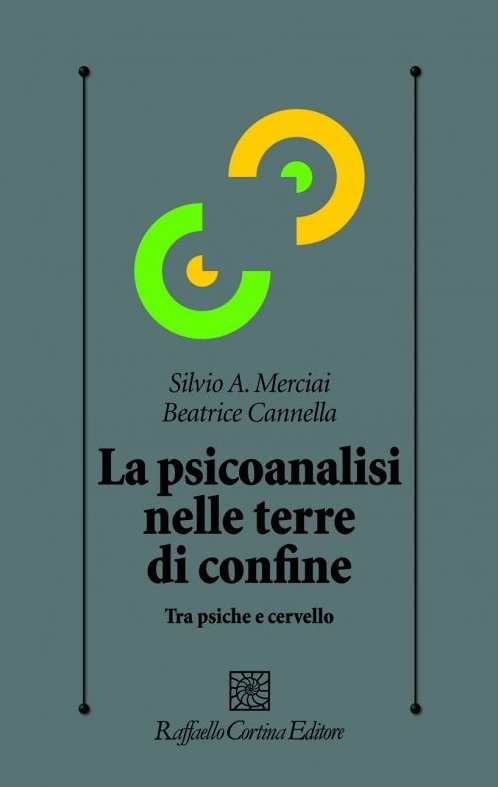
The book was primarily intended for our students and represented an attempt to consolidate years of research while establishing a foundation for future investigation. Though modest in its ambitions, it was among the first works to address the dialogue between psychoanalysis and neuroscience, following the pioneering efforts of a group of Neapolitan colleagues (notably Franco Scalzone) and Mauro Mancia in Milan.
More broadly, it aimed to maintain scholarly interest while proposing a methodological approach. Rather than starting from psychoanalytic theory to seek correspondences or potential confirmations in neuroscientific findings (the characteristic approach of classical neuropsychoanalysis), we chose to explore and traverse the neuroscientific domain, attempting to render it less mindless, to use Filippo Cieri's felicitous expression, while maintaining our psychoanalytic knowledge in the cognitive background to identify potential insights or generate novel wild thoughts (an approach more recently adopted by Rosa Spagnolo and her Roman research group IPD/NPSA).
I have continued to examine the dialogue between neuroscience and psychoanalysis through my blog

and in subsequent contributions (articles and book chapters, referenced in the 'My Writings' section), conferences, seminars, and my annually updated course "In dialogo con la psicoananlisi."
I was fascinated by this technological tool and, as soon as possible, began exploring the emerging field of computer science by writing my first basic programs on a Commodore 64.
The advent of personal computers naturally found me deeply interested in exploring their potential capabilities, which a modem allowed me to utilize in network communication with others (these were the BBS days: pre-Internet!). A Master's degree in Artificial Intelligence and Expert Systems, completed in 1988, helped me systematize my understanding of programming languages and potential developments in the field.
A significant turning point occurred through my interaction with a research colleague (Gian Paolo Zara) who was utilizing the revolutionary innovation of Internet connectivity (with its character-based interface, quite distinct from modern graphical applications).
I gained access to one of Italy's first Internet connections and embarked on an ongoing journey of exploration, knowledge acquisition, and professional networking. The local newspaper, La Stampa, provided me with an opportunity to disseminate this knowledge through a biweekly column (1995-1996).
The Internet rapidly became my primary tool for research, information gathering, and, to a lesser extent, engagement with digital media.
I soon encountered the emerging discipline of cyberpsychology, beginning with John Suler's seminal text The Psychology of Cyberspace, which naturally led to my research interest in remote psychotherapy...
I published my initial analysis of this topic in 1998 in the journal Psiche: Internet: A Challenge (a draft version is available on my website).
We subsequently decided to investigate this subject in greater depth through extensive discussions within the Online Therapy Study Group (2000-2001), which I co-coordinated with Pietro Roberto Goisis. This research culminated in a comprehensive 2002 article, Online Psychotherapy: A Tailored Approach, published in @psychotherapy, edited by Tonino Cantelmi, Simonetta Putti, and Massimo Talli (a version is available on Psychomedia).
In September 2021, again collaborating with Pietro Roberto Goisis, I edited the second section, titled "Online Therapy. Problems and Opportunities" of the Funzione Gamma journal issue dedicated to "The Pandemic and Online Therapy".
The section comprises five distinct segments:
How Did We Get Here?
The COVID-19 Pandemic: A Year of Online Experience
Theoretical Reflexions
Clinical Experience
On the Other Side of the Screen
concluding with a Photobook Images from some Online Settings,
and our Afterword:A Look Through the Nets.
Of particular scholarly significance are the contributions by Paolo Migone, and interviews with My personal contributions include:
the introductory article The Prehistory, the First Clinical Experiences and the “Online Therapy Study Group”, co-authored with Pietro Roberto Goisis,
a comprehensive review of pre-pandemic international literature Online Psychotherapy Before the Covid-19 Pandemic,
and an analytical examination, with Beatrice Cannella, of challenges posed by new online therapeutic settings Online Therapy: Setting and Body.
The Challenges of Online Therapy: Psychoanalysis Facing Change.
This work was subsequently translated into English and published in
The Italian Psychoanalytic Annual, 2023.
I find it meaningful to reflect on how philosophy, which I deeply engaged with during my secondary education, helped develop my critical thinking capabilities: a disposition toward methodological skepticism, openness to diverse theoretical perspectives, and awareness of the limitations and paradoxes inherent in our knowledge frameworks. This sense of intellectual freedom - while occasionally creating tensions with institutional constraints - was further reinforced during my analysis with Tommaso Senise, who wrote extensively about freedom and had established it as his fundamental ethical principle.
My academic trajectory followed a relatively linear progression that I had conceptualized as optimal for my professional development: medical degree from the University of Turin (1971), psychiatric specialization in Milan (1975), psychotherapy training at the Via Ariosto Institute in Milan (1976-1980), and finally, when financially feasible, psychoanalytic training at SPI, culminating in associate membership in 1990.
However, I was partially compensated years later (2005-2013) with appointments as Adjunct Professor at several institutions: the Faculty of Psychology in Turin (teaching Psychosomatics), the University of Aosta (teaching Neurobiology of Relational Experience), and finally at San Raffaele University in Milan (co-teaching Psychoanalysis and Neuroscience with Vittorio Gallese).
Following my university experience, I have continued my pedagogical work at several postgraduate psychotherapy institutes:
In Milan, at the
SIPRe School of Psychotherapy

In Prato, at the
Erich Fromm School of Psychotherapy

And in Ravenna, at the
School of Psychoanalytic Psychotherapy
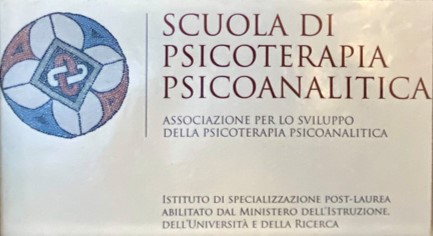 .
.
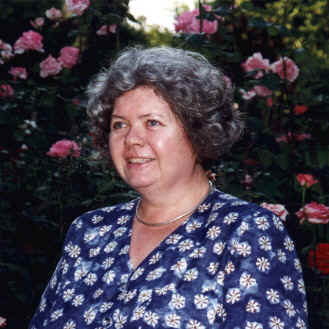
and studying the theoretical framework of her father, Wilfred R. Bion, under her guidance
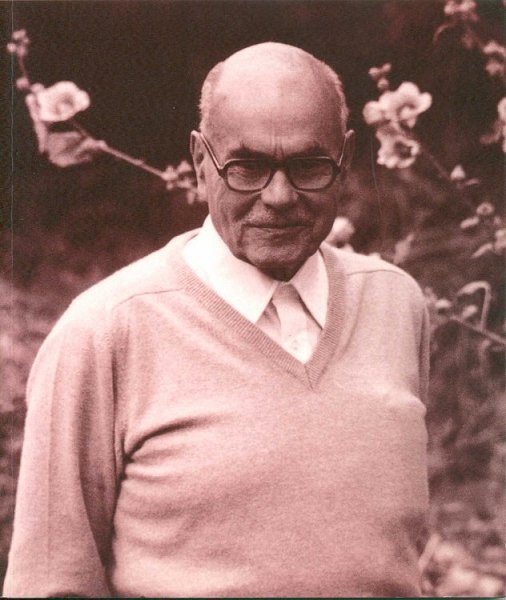
The initiative began at Parthenope's instigation in 1992 with the establishment of a study group on Bion's work. The investigative process continued independently, guided by Parthenope's influential statement from her 1987 paper:
We cannot call ourselves Bionians, because being one means first being ourselves, maintaining intellectual freedom in our voyages of discovery - always, however, based on rigorous personal discipline, as freedom and anarchy are not synonymous
Those years were marked by Bion's seminal observations, which I would later revisit repeatedly, as they shaped my development as a psychoanalyst...
For instance:
Will psychoanalysts study the living mind? Or will Freud's authority be employed as a deterrent, as an obstacle to the study of persons? The revolutionary becomes respectable: and thus becomes a barrier against revolution. The invasion of the animal by a germ or an anticipation of an accurate instrument of thought is poorly received by the feelings already possessed. This war is not yet over.
And further:
When two personalities meet, an emotional storm is created. If they make sufficient contact to be aware of each other, or even enough to be unaware, the conjunction of these two individuals produces an emotional state, and the resulting disturbance need not necessarily be considered an improvement over the previous state of affairs. But, since they have met and since the emotional storm has occurred, the two parties involved in this storm can decide to make the best of a bad job.
... I am the bad job. I cannot be completely analyzed - I don't believe such a thing exists. Analysis must end someday; after which I must do the best I can with what I am.
During this period, we collaborated on the translation of Cogitations
In 1997, Parthenope and I organized in Turin the
 International Centennial Conference on the Work of W. R. Bion.
International Centennial Conference on the Work of W. R. Bion.
The conference papers were initially published online and remain accessible.
For this occasion, I launched the "bion97" mailing list, which continues to be active.
At the Conference, we distributed my translation of
Taming Wild Thoughts.
The most significant conference contributions were subsequently published in
Working with Bion by Borla, and in two volumes by Karnac:
Bion's Legacy to Groups and W.R. Bion: Between Past and Future.
Parthenope's premature death in 1998 concluded this period of scholarly collaboration, leaving a profound sense of loss...
Some time later, I dedicated to her memory the Parthenope Bion Talamo Memorial Site
For a complete list of my publications please refer to the Italian version of this site
Papers:
- Parthenope Bion Talamo e Silvio A. Merciai (1997). On the Centenary of W.R. Bion. Psychoanalysis in Europe, IL, pagg.101-106.
- Parthenope Bion Talamo e Silvio A. Merciai (1997). Letter to the Editor of the F.E.P. Bulletin.
- Dominique Scarfone, Robert Galatzer-Levy, Romulo Lander, Peter Fonagy, Joseph Sandler, Silvio Merciai (1998). Ad-hoc Committee on IPA E-mail Discussion Forum.
- Silvio A. Merciai (1999). In Memoriam: Parthenope Bion Talamo, Ph.D. (1945-1998). In Journal of Melanie Klein and Object Relations, XVII, 2, pagg. 197-198.
- Franco Borgogno e Silvio Arrigo Merciai (1999). Searching for Bion: Cogitations, a new 'clinical diary'? In Parthenope Bion Talamo, Franco Borgogno e Silvio A. Merciai, Eds. (1999). W. R. Bion: Between Past and Future. Karnac Books, London.- Republished as Meeting Bion: cogitations, a new clinical diary? in Franco Borgogno, Psychoanalysis as a Journey, Open Gate Press, 2007, pag. 127 and on the International Forum of Psychoanalysis, 2018, 27:3, 135-145.
- Silvio A. Merciai (2018). Making the best of a bad job (Foreword). In Rosa Spagnolo (a cura di), Building Bridges, The Impact of Neuropsychoanalysis on Psychoanalytic Clinical Sessions, Routledge, London & New York, 2018, pg. xi-xix.
- Pietro Roberto Goisis e Silvio A. Merciai, Editors (2021). Covid-19 Pandemic and Online Therapy
- Silvio A. Merciai and Pietro Roberto Goisis (2021). The Prehistory, the First Clinical Experiences and the “Online Therapy Study Group”.
- Silvio A. Merciai (2021). Online Psychotherapy Before the Covid-19 Pandemic.
- Pietro Roberto Goisis and Silvio A. Merciai (2021). “What we Have Learned”: A Conversation with Stefano Bolognini.
- Silvio A. Merciai and Pietro Roberto Goisis (2021). “A Great Opportunity and a Great Challenge”: In Conversation with Marlene M. Maheu.
- Beatrice Cannella and Silvio A. Merciai (2021). Online Therapy: Setting and Body.
- Pietro Roberto Goisis and Silvio A. Merciai (2021). Afterword: A Look Through the Nets.
- Pietro Roberto Goisis and Silvio A. Merciai (2022). The challenges of online sessions. Psychoanalysis in the face of change published on The Italian Psychoanalytic Annual, 2023



 my blog
my blog 

